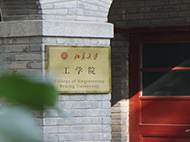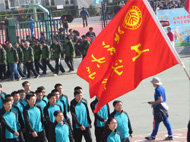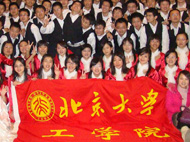主办:生物医学工程系
报告人:Dr Lining ‘Arnold’ Ju Australian Research Council DECRA Fellow
时间:6月28日(周五)下午4:00
地点:综合科研楼137会议室
主持人:葛子钢
题目:
1.Biomechanical Thrombosis: The Dark Side of the Force and Dawn of Cardiovascular Mechanomedicine
2. Novel anti-thrombotic strategies against diabetes thrombosis
报告内容摘要:
Theme 1: Biomechanical Thrombosis: The Dark Side of the Force and Dawn of Cardiovascular Mechanomedicine
Excessive activation of platelets and subsequent blood clotting leads to heart attack and stroke. Therefore, antiplatelet drugs such as Aspirin and platelet ADP receptor P2Y12 antagonist Plavix® or Brilinta® are commonly used for the treatment of thrombotic diseases. However, these drugs have serious side effects that cause fatal bleeding. For a long time, studies in the field of thrombosis have attempted to understand the mechanism of platelet activation at the cellular and molecular levels, and hope to provide ideas for the development of new antithrombotic drugs with strong efficacy and few side effects. Interestingly, previous studies have found that platelets are strongly sensitive to mechanical forces—platelets are easily activated in blood flow disturbance caused by arterial stenosis and can rapidly aggregate to form clots. In recent years, it has been found that the glycoprotein (GP) receptor GPIb and integrin receptor GPIIb/IIIa on the surface of platelets are important molecules for platelets to sense and respond to mechanical force embedded in the dynamic blood flow. However, how these GP receptors, or ‘mechano-sensors’, function and cooperate to achieve the mechanical activation of platelets at the molecular level is an unsolved mystery that intrigues the field.
This research is the first single-molecule mechanobiology study on live human platelets. Dr Ju pioneered a unique nanotool called dual Biomembrane Force Probe (dual BFP), and combined it with microfluidics and fluorescence imaging techniques, revealing the biomechanical activation mechanism of integrin GPIIb/IIIa in the context of flow disturbance driven platelet clotting. Significantly, this mechanism is essentially different from the biochemical platelet activation pathways that are targeted by abovementioned antiplatelet drugs.
The "mechanically driven platelet activation" phenomenon found in this study explains why platelets can aggregate and accumulate by mechanical stimulation of high-speed turbulence alone, leading to vessel occlusion. Dr Ju’s research also provides a new explanation for the poor efficacy of conventional antiplatelet drugs in the treatment of thrombotic cardiovascular diseases. Although these drugs inhibit the biochemical activation of platelets, they may not block the platelet biomechanical signaling pathways. Therefore, this research provides new ideas for the development of novel and highly effective antithrombotic drugs with no serious bleeding side effects.
Theme 2: Novel anti-thrombotic strategies against diabetes thrombosis
Thrombotic diseases where platelets form clots and obstruct blood vessels remains the leading cause of death and disability in the world. Despite intense investigation over the last 40 years into the discovery and development of more effective drugs, less than 1 in 6 patients taking anti-thrombotic therapies avoid a fatal event. This situation is likely to worsen in younger generations due to the rapidly growing incidence of diabetes, which makes people more prone to thrombosis and resistant to existing anti-thrombotics with unknown reasons.
To investigate this, I have developed the ‘Biomembrane Force Probe’ as the first-of-its-kind. This nanotool represents a significant departure from traditional biological studies of protein-protein and cell-cell interactions after prolonged incubation, uniquely suitable for studying these transient interactions in rapidly circulating blood under mechanical force. I have identified a previously unrecognised force-sensing mechanism utilised by platelets during blood clotting (Nature Materials 2019). This mechanism is dysregulated in diabetes, leading to shear-specific enhancement in platelet thrombus formation. Importantly, my studies defined a new therapeutic approach to reduce platelet shear force-sensing function – through inhibition of PI3-Kinase (Nature Communications 2018). This may ultimately lead to a new treatment to combat the fatal thrombotic disease for patients with diabetes.
报告人简介:
Dr Lining ‘Arnold’ Ju represents a future leader in the biomedical engineering. He is an Australian Research Council DECRA Fellow (澳洲优青,2019-21) and a former National Heart Foundation (NHF) Postdoctoral Fellow (2017-18; top awardee).
He completed PhD in biomedical engineering mentored by the world leaders Prof Cheng Zhu (AIMBE, ASME) and the US Academy Member Prof Larry V. McIntire (NAE, AAAS) at the Georgia Institute of Technology and Emory University with the prestigious SigmaXi Best Thesis honor in USA. In early 2014, Dr Ju first joined the Monash University in Melbourne then the University of Sydney as a postdoc supervised by the NHMRC Senior Principal Research Fellow Prof Shaun Jackson. He has developed a new focus on discovering the mechanosensory proteins in our cardiovascular system and how blood cells utilise them to sense force. He proposes new therapeutic strategies can efficiently prevent disease-forming clots, or thrombosis, particularly for people with diabetes who suffer from resistance to conventional anti-thrombotic drugs. Considering that diabetes represents the biggest challenge confronting the Australian healthcare system, his discovery will protect those that are most vulnerable to heart diseases. This emerging area is called cardiovascular mechanobiology and involves the application of Dr Ju’s biomechanics/bioengineering expertise at the molecular and cellular scale.
欢迎广大老师和员工参加!









